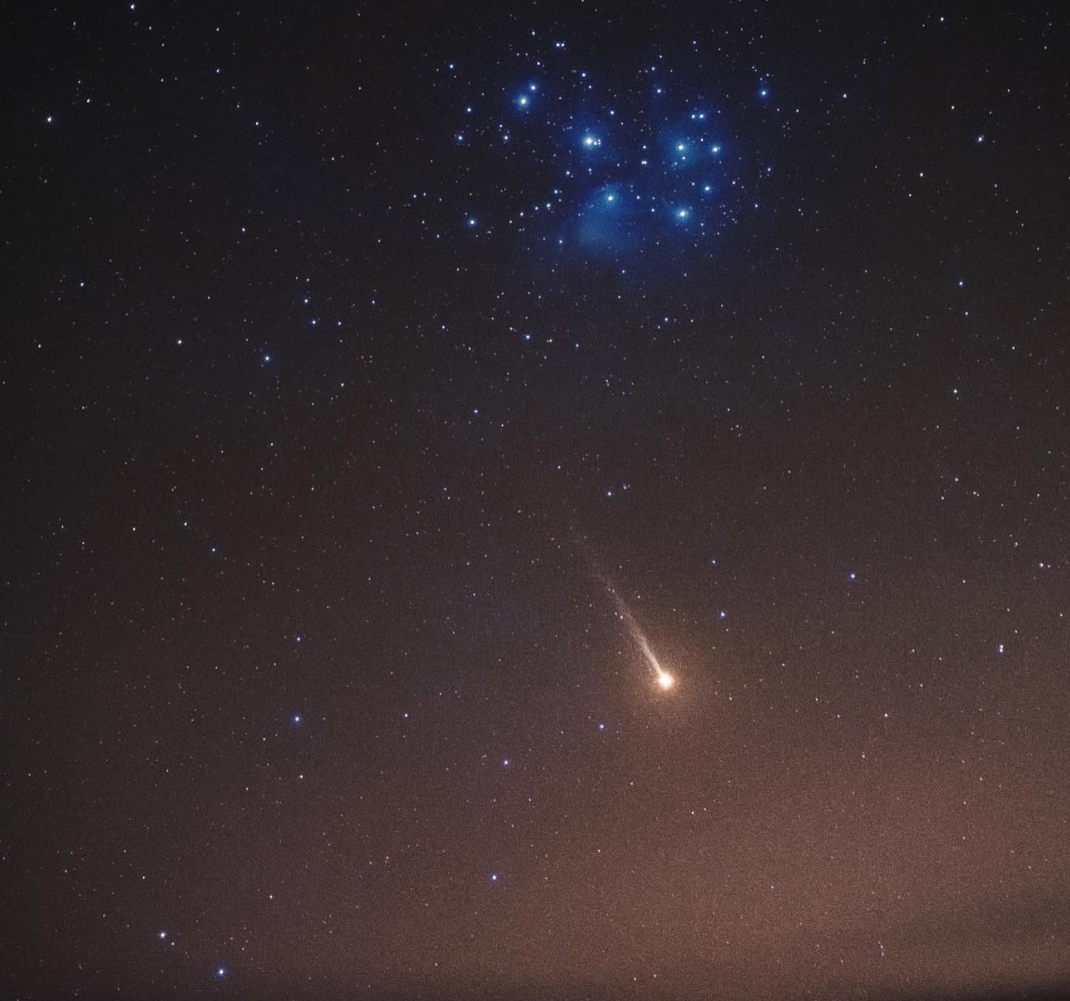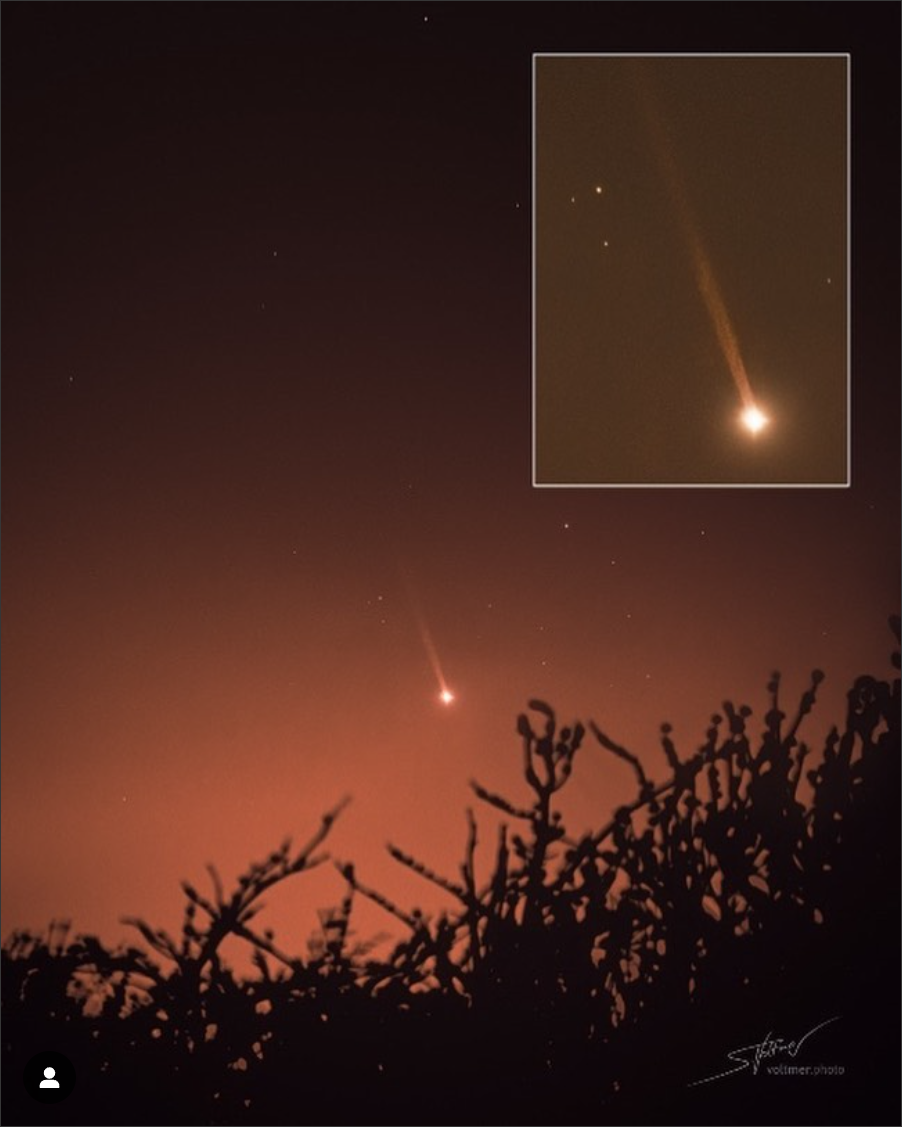Astrophotographer Sebastian Voltmer noticed how Mercury “cosplayed” a comet during its perihelion. The closest to the Sun and the smallest planet in the Solar System can sometimes have a comet-like tail formed by a powerful solar wind. Astronomers have known about Mercury’s tail since 2001. Since then, it has been discovered that the comet tail of the planet grows and decreases depending on the proximity to the Sun.

At its peak, the tail has a length of approximately 24 million km, which is about 62 times greater than the distance between the Earth and the Moon. The tail stretches for such a huge distance because Mercury has a very weak atmosphere and is close to the Sun, which allows the solar wind to easily “set fire” and envelop the tiny planet.
For unknown reasons, Mercury’s tail is best seen from Earth exactly 16 days after perihelion, or the point at which the planet is closest to the Sun. Mercury reached perihelion on April 1, meaning its tail was brightest on April 17.

For an ordinary observer, Mercury’s tail is not easy to see with the naked eye; therefore, it remained undiscovered until the XIX century. But Voltmer was able to photograph the giant plume thanks to a specialized filter that separates yellow light waves emitting excited sodium particles in the tail.
Mercury is not the only celestial body in the Solar System with a surprisingly comet-like tail. Our moon also has a tail that is visible only once a month when the Earth passes through it. Like Mercury, the Moon’s tail is mostly made up of sodium atoms and is barely noticeable without special tools.
Earlier we reported on why it was so hard to “catch” Mercury.
According to voltmer.de.
Follow us on Twitter to get the most interesting space news in time
https://twitter.com/ust_magazine

